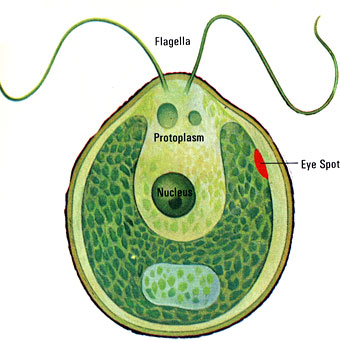Cell Structure and Functions Part 4
Good morning boys!!
In the last class we learnt about different cell cell organelles and their functions.
In the last class we learnt about different cell cell organelles and their functions.
As a quick recap, see if you can answer the following questions-
1. Name the plastids present in the plant cell.
2. Name the plastid that give colour to flower and fruits.
3. What is the function of mitochondria?
4. Compare the size of vacuole present in animal with the vacuole in plant.
5. What is the role of Ribosomes?
2. Name the plastid that give colour to flower and fruits.
3. What is the function of mitochondria?
4. Compare the size of vacuole present in animal with the vacuole in plant.
5. What is the role of Ribosomes?
Great if you could answer these! In case you could not ,please revisit the last blog or pages 131 of your reader.
Now, in today class we will discuss about the difference between plant and animals cell. We will also discuss different cell organism and their identifying features.
LEARNING OUTCOMES
At the end of this topic, the learners will be able to-
-name unicellular organisms
-list the identifying features of some unicellular organisms like amoeba, paramecium etc
Now, in today class we will discuss about the difference between plant and animals cell. We will also discuss different cell organism and their identifying features.
LEARNING OUTCOMES
At the end of this topic, the learners will be able to-
-name unicellular organisms
-list the identifying features of some unicellular organisms like amoeba, paramecium etc
Difference between plant cell and animal cell
Write the difference between them also.
(ii) It usually has one or two large vacuoles.
(iii) Plastids are present.
(iv) Centrosomes are absent.
(v) Lysosomes are absent.
Animal Cell: (i) No such cell wall is present
(ii) Vacules are either absent or are smaller in size.
(iii) Plastids are absent.
(iv) Centrosomes are present.
(v) Lysosomes are present.
Now, let us all discuss about single celled or unicellular organisms that can perform all basic activities of life and live independently.
1. AMOEBA
It is an unicellular aquatic animal, that is irregular in shape and has body projections called pseudopodia, that help to catch its prey. Food taken in by amoeba is digested in food vacuole.

2. PARAMECIUM-
It is a slipper -shaped unicellular aquatic animal. Its body is covered with small hair - like projections called cilia that enable it to to move fast in water. It has tow nuclei- macronucleus and micronucleus.

3. EUGLENA
It is a spindle- shaped green coloured unicellular animal. It has a long thread like flagellum at its anterior end, that helps it in movement. It takes food in through its gullet. The contractile vacuoles help absorption and excretion of water.

4. CHLAMYDOMONAS
It is a unicellular green colour aquatic plant that has a whip-like structure called flagella that helps it to float in water. Its green colour in due to the presence of chloroplast in the cell.
 5. YEAST
5. YEASTIt is a unicellular plan( Fungi). It causes fermentation of foods containing carbohydrate.
 A QUICK CHECK!
A QUICK CHECK!NAME THE UNICELLULAR ORGANISM WITH HELP OF THE CLUES GIVEN:
1. Has false feet called pseudopodia.
2. Has hair -like structures called cilia.
3. Is spindle -shaped.
4. It causes fermentation in foods containing carbohydrates.
5. Is a slipper-shape aquatic animal.
6. An aquatic animal with a flagellum.
HOMEWORK
1. Do question D ( page 134) in the reader itself.
2. Do questions A,B on page 135 in the reader itself
3. Do questions A,B on page 136 in the reader itself.



Good morning Sir, Manvendra here.
ReplyDeleteGood Morning Sir, Avi Surana here.
ReplyDeleteThis comment has been removed by the author.
ReplyDeleteGood morning sir
ReplyDeleteI am ARSH NATH
Good Morning Sir,
ReplyDeleteI Am Maulik Jain
Sir, Do we have to write the name and functions of the unicellular organisms given above in our Science notebooks?
ReplyDeleteyes, they are important with diagrams also
Deletegood morning sir. I am N.Rakalo
ReplyDeleteGood morning sir, I'm Aditya Singh
ReplyDeletegood morning sir i an Ansh
ReplyDeletegood morning sir I am Dakshesh
ReplyDeleteGood Morning Sir,
ReplyDeletemy name is aaryan saini
Good morning sir. I am Taksh here
ReplyDeleteGood morning sir I am Alan Roy
ReplyDeleteGood morning sir, I am Aditya sagar
ReplyDeleteGood Morning Sir,
ReplyDeleteI am Anirudh Trivedi
Good morning sir,
ReplyDeleteI'm Lakshay chandel
hello chetan
DeleteSir, Do we have to write the name and functions of the unicellular organisms given above in our Science notebooks?
ReplyDeleteyes, they are important
DeleteGoodmorning Sir,
ReplyDeleteCyril Martin
Good morning Sir,
Cyril Martin
Good morning sir.Chirag here
ReplyDeleteGood morning sir
ReplyDeleteI am Ayush Jain
Good morning Sir
ReplyDeleteRemthanglien Aomar Varte here.
Good morning sir, I am Shreyansh Agarwal
ReplyDeletegood morning sir,
ReplyDeleteI am Pall Anand
Good Morning Sir,
ReplyDeleteI am Aryan Puri.
Good Morning Sir,
ReplyDeleteI'm Samrath Singh
good morning sir I rudra sethi
ReplyDeletesir please tell
ReplyDeleteGood morning sir .Arnav Daga here
ReplyDeleteGood morning sir. I am Falit Mittal.
ReplyDeleteGood morning sir,
ReplyDeleteJestin T
Good Morning Sir!
ReplyDeleteGood morning sir I am Evaan Dayal
ReplyDeleteGood morning
ReplyDeletegood morning sir i am adhiveer gandhi
ReplyDeleteGood morning sir
ReplyDeleteI am Aarnav sareen
Goodmorning ma'am I am rudra sethi
ReplyDeleteGoodmorning ma'am I am rudra sethi
ReplyDeleteGood Morning Sir,
ReplyDeleteMy name is Vedant Kumar
Good morning sir I am Allen sushil
ReplyDeleteGood morning sir , I am Naman kalra
ReplyDelete